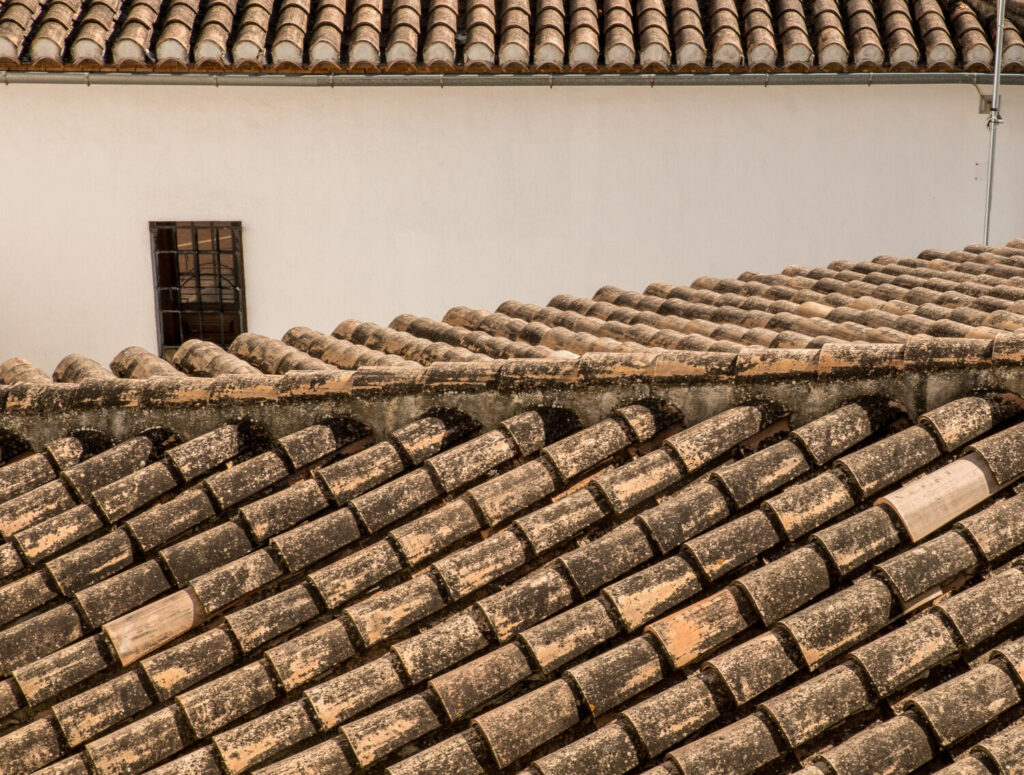Ceramic tile roofing is one of those materials that stands out for its good looks and toughness. It gives homes a classic, clean style and can stand up to heat, wind, and even heavy rain if it’s cared for properly. That makes it a solid pick for homeowners who want something dependable without giving up curb appeal. Still, even the strongest tile roof doesn’t last forever. Over time, weather, age, and small issues can add up to bigger problems.
Catching warning signs early is the best way to avoid expensive repairs. Small signals like a few slipped tiles or tiny leaks might not seem big at first, but they can open the door to water damage, mold, or insulation issues. The trick is knowing what to look for before the problem spreads. Regular roof checkups can help, but homeowners also benefit from keeping an eye out for the most common red flags between visits. Here’s what to watch for if you have ceramic tile roofing.
Visible Cracks or Broken Tiles
Walk a few steps away from your home, and take a slow look at your roof. Do you notice any small cracks, missing corners, or completely broken tiles? Even one or two damaged tiles can be a sign that your roof is beginning to wear down. On ceramic tile roofs, breaks often happen from impact, like branches falling or something hitting the surface in a storm. Once a tile is damaged, water can get in underneath and mess with the layers below.
Here’s what to look for from the ground:
- Gaps where a tile should be
- Sharp edges or exposed underlayment
- Tiles that appear darker than the others due to dampness
- Uneven spots that break the clean roof pattern
Sometimes, damage isn’t right in front. It could be higher up or tucked near a gutter edge. In that case, binoculars or a drone inspection can help spot problem areas without the risk of climbing. Either way, if damage is visible, it’s best to get someone out to check how widespread it really is. Replacing just one tile might do the job, or it may reveal other hidden issues that need work.
Water Stains on Ceiling or Walls
If your ceiling starts showing spots, streaks, or discoloration in random patches, it might be coming from above. Leaks in ceramic tile roofing don’t always happen fast. Often, water will seep in slowly over time through cracks or loose tiles, soaking insulation or beams before making its way down into living spaces.
Check for these signs:
- Yellow, brown, or gray stains along the ceiling or upper wall corners
- Peeling or bubbling paint near the tops of walls
- A musty smell that doesn’t seem to go away, even with cleaning
One homeowner noticed a faint brownish ring on the ceiling that grew each month. It turned out a single broken tile and cracked flashing had let water run down into the attic for weeks. By the time the stain appeared, the insulation was soaked through and part of the drywall had begun to sag slightly.
Seeing marks on the inside of your home often means the roof has already been leaking for a while. That makes early spotting even more important. If the damage is caught quickly, repairs can be focused on the small area instead of needing a full roof section pulled up.
Mold or Moss Growth
Moss doesn’t just pop up overnight. When it appears on a ceramic roof, especially around edges or in shaded areas, that usually means moisture has been sitting on the tiles for too long. The same goes for mold, though it shows up as dark splotches rather than green patches.
Here’s why that matters:
- Standing water can get under tiles and cause the wood beneath to rot
- Mold and mildew create health issues over time, especially through attic vents
- Moss can shift tiles as its roots dig in, making leaks more likely
Look at the north-facing side of your roof or any shaded spots that don’t get a lot of sunlight. Those areas often take longer to dry after rain and are more likely to hold in moisture. Even if the roof looks mostly clean, a few signs of moss or black streaks can signal trouble that’s starting to build underneath the surface.
The longer moisture builds up, the harder it is to repair these areas. Cleaning the roof might help short-term, but it’s just as important to figure out what allowed it to grow there in the first place. Whether it’s clogged gutters, damaged flashing, or cracked tiles, the root cause should be fixed before the cycle starts again.
Sagging Roof Deck
A roof that dips or looks uneven from the side view is more than just a cosmetic problem. A sagging roof deck is often a clue that something underneath has weakened, shifted, or become soaked. If enough support has been lost, the weight of the ceramic tiles, though lighter than some materials, is enough to cause parts of the roof deck to slowly slump over time.
Some signs are easy to spot, like:
- Wavy or bowed lines along the roof when viewed from the yard
- Spots where water pools or drains unevenly
- A soft or springy feeling in the attic floor or ceiling area
These aren’t just visual issues. Even if the roof tiles still look intact, the structural material holding them up might be compromised. Water exposure is usually where the problem starts. Over time, it eats away at the plywood or framing beneath the tiles. Once that support weakens, the roof begins to bend or dip inward.
Sometimes sagging is caused by improper installation or poor ventilation in the attic. Moisture builds up, wood begins to warp, and the decking gives out. It’s smart to tackle this head-on before it gets worse. A sagging section almost always needs a closer look, inside and out, because it can affect more than just the roof. Left unchecked, it might impact the edges of the house, attic framing, or even ceiling joints.
Rising Energy Bills Linked to Roof Trouble
If the heating or cooling bill keeps creeping up but the AC or heater hasn’t changed, your roof might be to blame. Ceramic tile roofing, when damaged, can mess with how well your home holds in hot or cold air. Tiles may crack, shift, or leave gaps that aren’t noticeable at first but allow drafts or moisture inside.
Here’s how roof issues can affect energy use:
- Gaps or loose tiles let air escape, forcing systems like HVAC to work harder
- Wet insulation under leaks loses its ability to regulate temperature
- Attics with small holes or leaks tend to trap more heat or cold air depending on the season
If you’ve already sealed up windows and added insulation but the bill still seems high, take a closer look at the roof, especially if it’s been a while since someone last checked it. A good example is a homeowner who noticed a quiet whistle near their attic vent whenever the wind blew. It turned out a hidden crack in a tile had let water seep underneath and shift some insulation. After fixing it, their home cooled off faster and the AC didn’t run as often.
Even though ceramic tile does a solid job blocking out the elements when everything’s in place, small problems make the system work less efficiently. Tracking changes in your energy costs against seasons or weather patterns can hint at a roofing issue early on.
Protecting Your Home with Timely Roof Care
Homeowners often spot signs of roof problems when they’re already starting to affect comfort or appearance. But the earlier those signs are recognized, like stains on ceilings, moss creeping in, or dips in the roofline, the easier and cheaper they are to fix. Ceramic tile roofing is meant to last, but only if it’s given the attention it sometimes needs.
Keeping roofing in top shape isn’t just about avoiding leaks. It’s also about preserving your home’s insulation, indoor air quality, and structure. A regular check each season, paired with a quick response when you see one of these warning signs, keeps your roof strong and dependable for years to come. If you’re starting to notice these changes, it’s a good time to reach out for a professional inspection before more damage sets in.
Keep your home safe and energy-efficient by addressing issues early with your ceramic tile roofing. If these warning signs sound familiar, trust First Response Roofing to provide comprehensive solutions that help your roof stay strong through every season.

